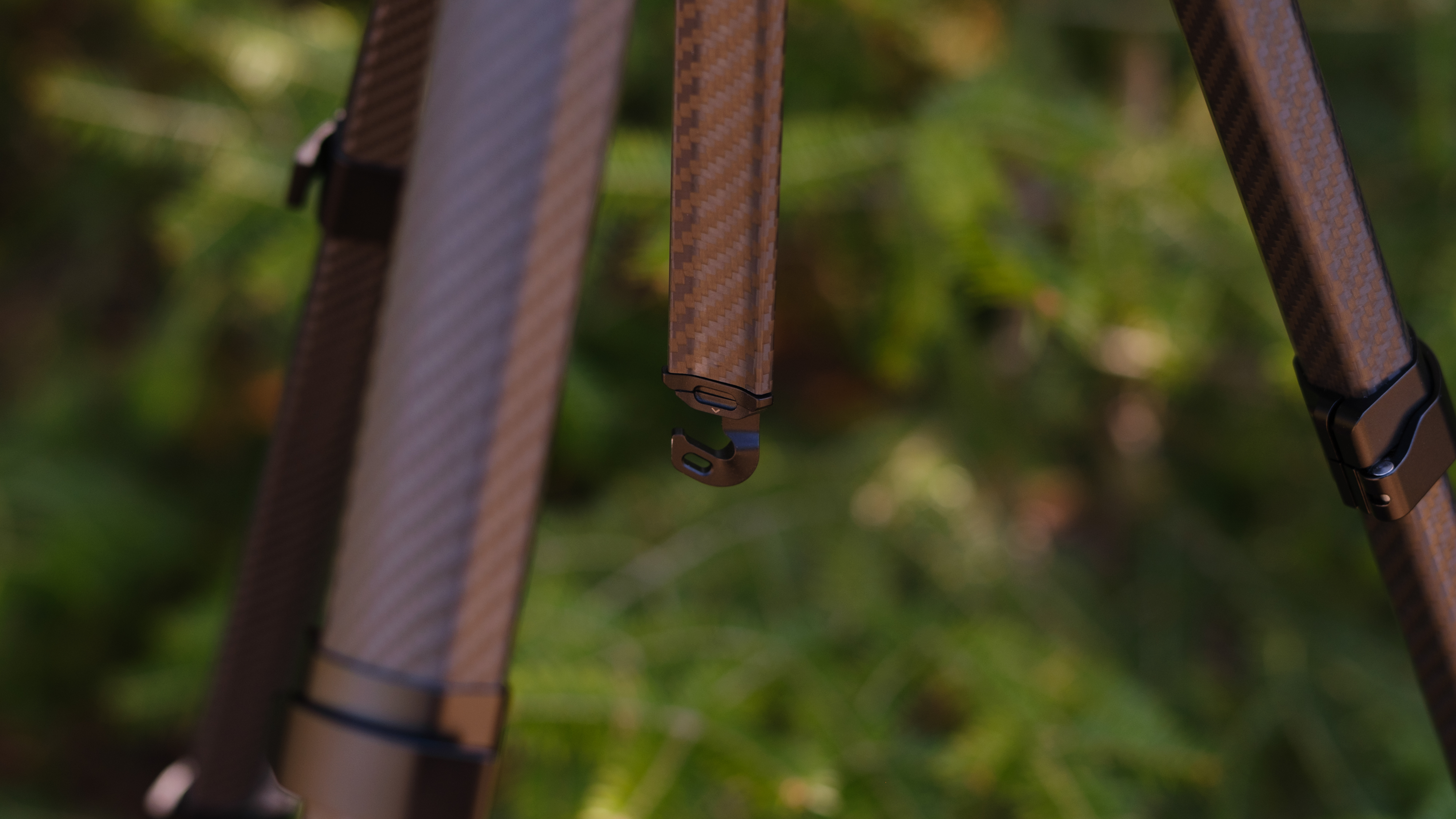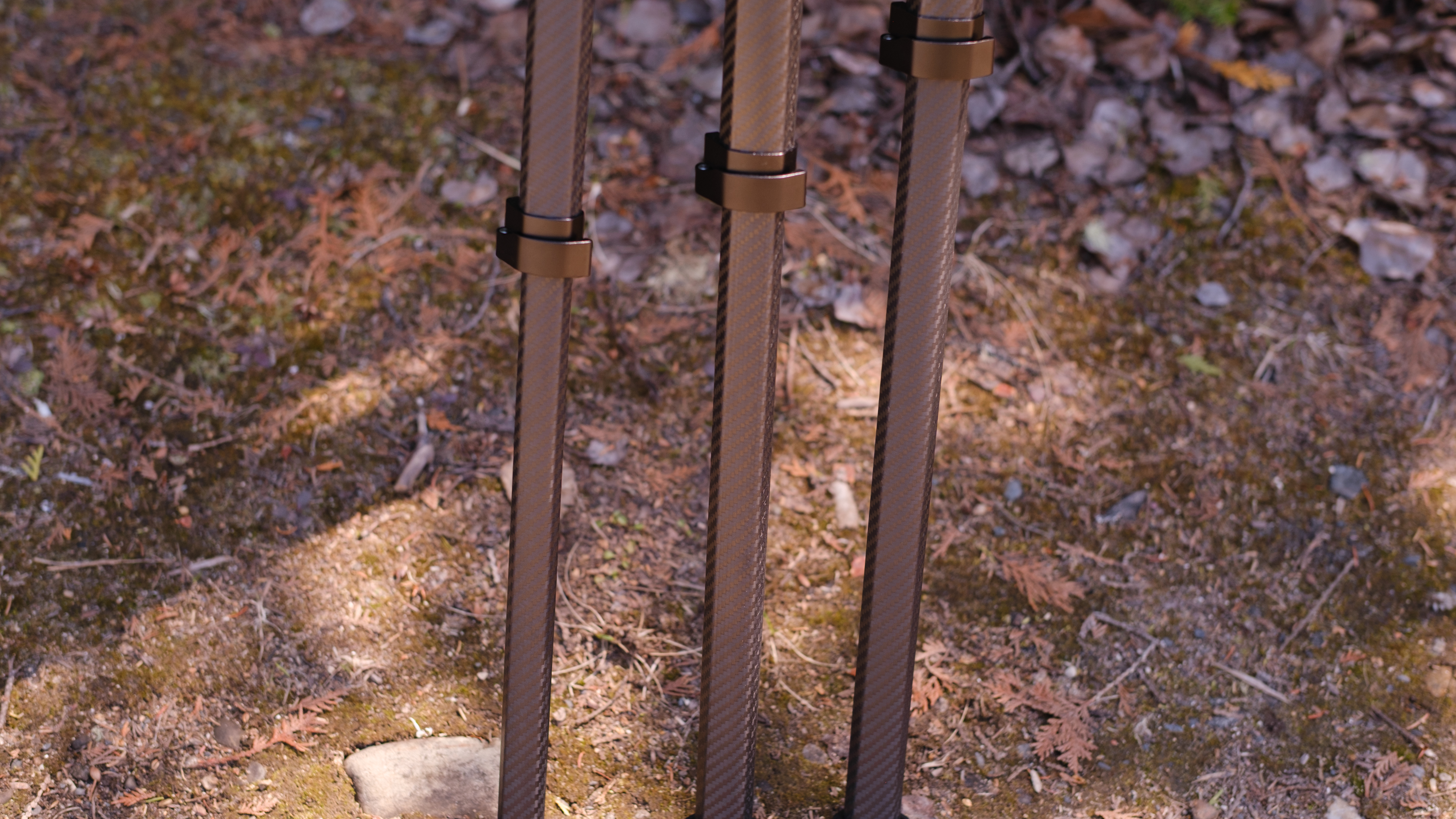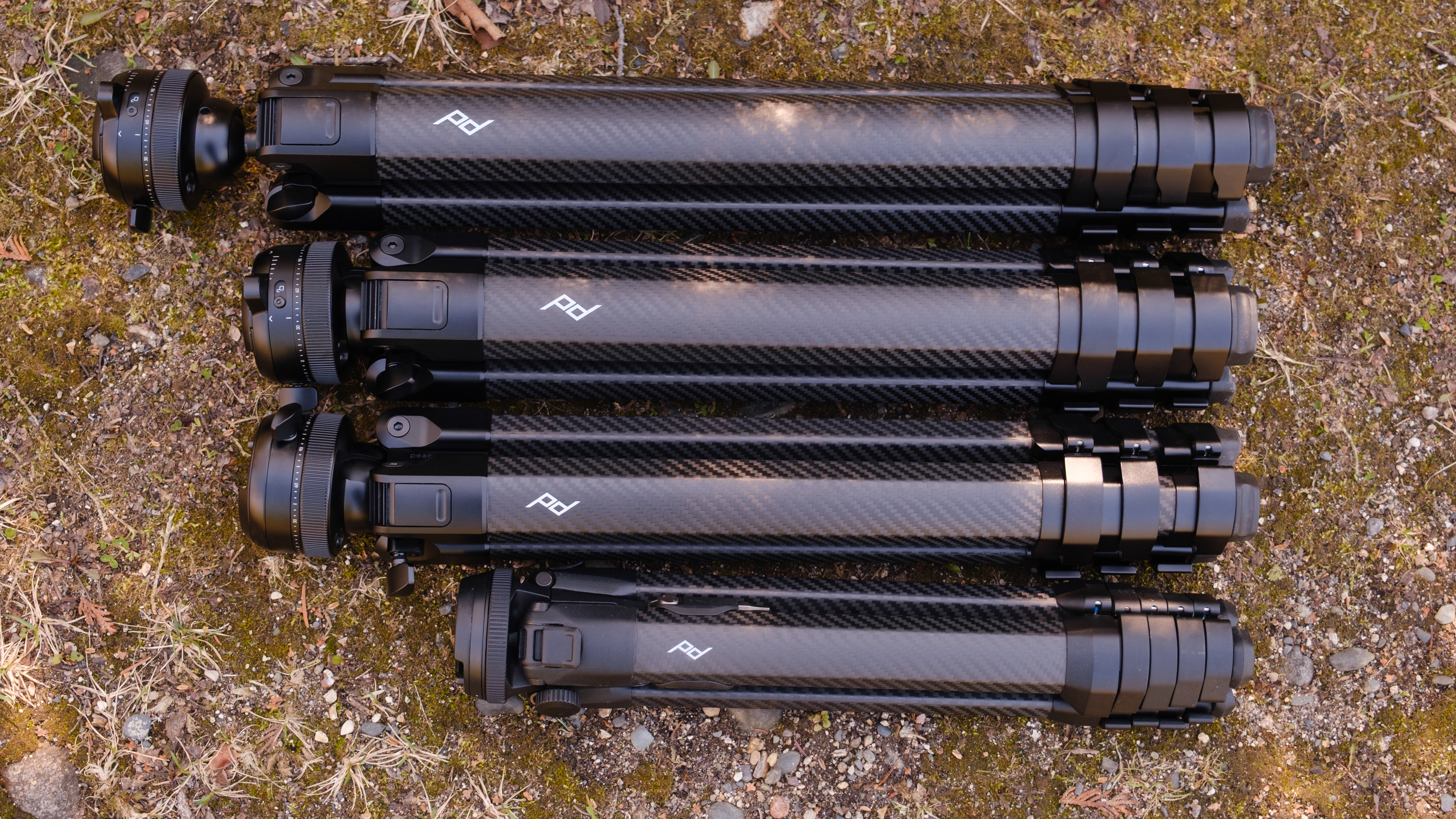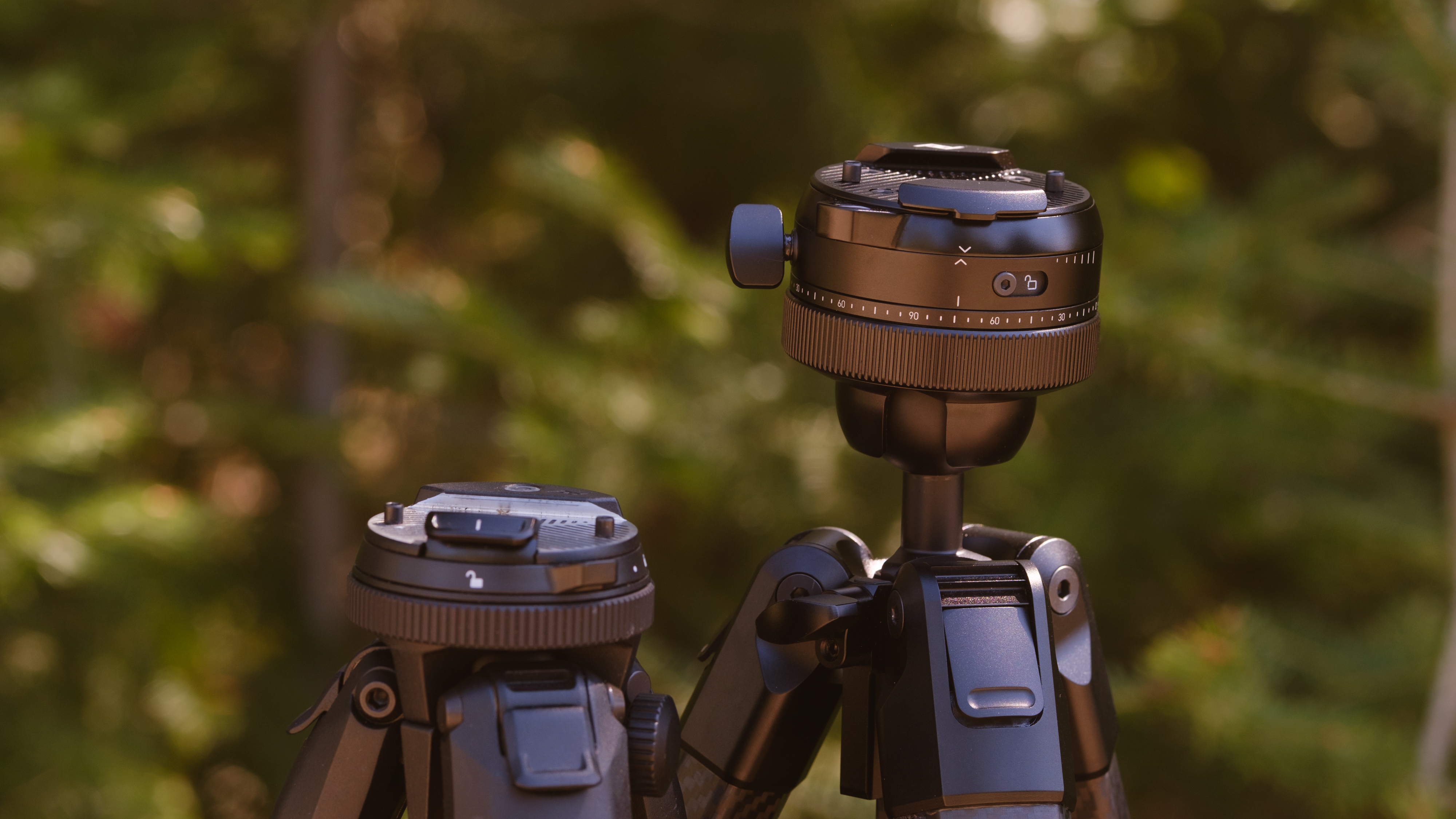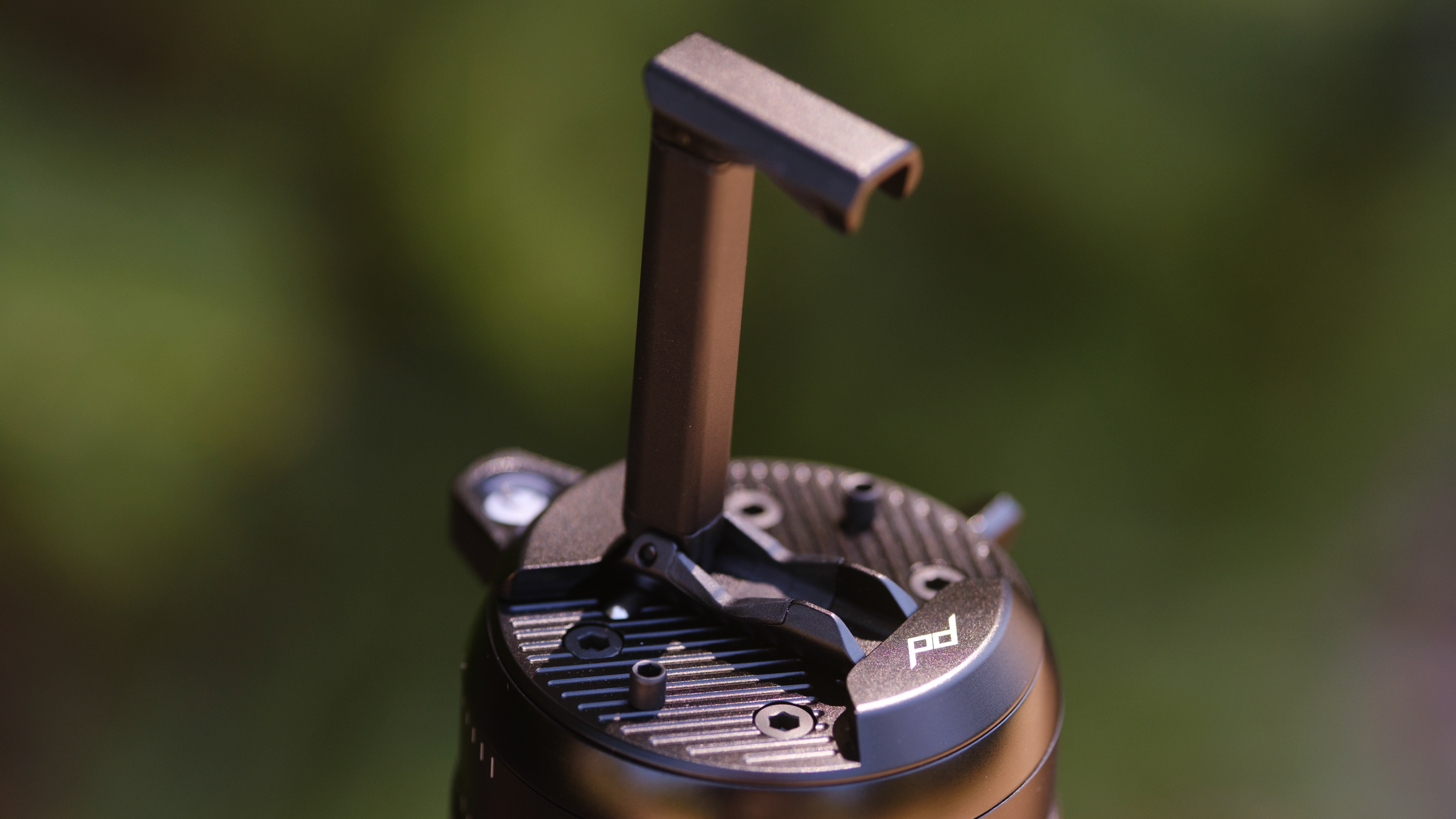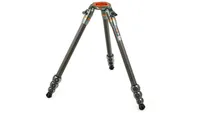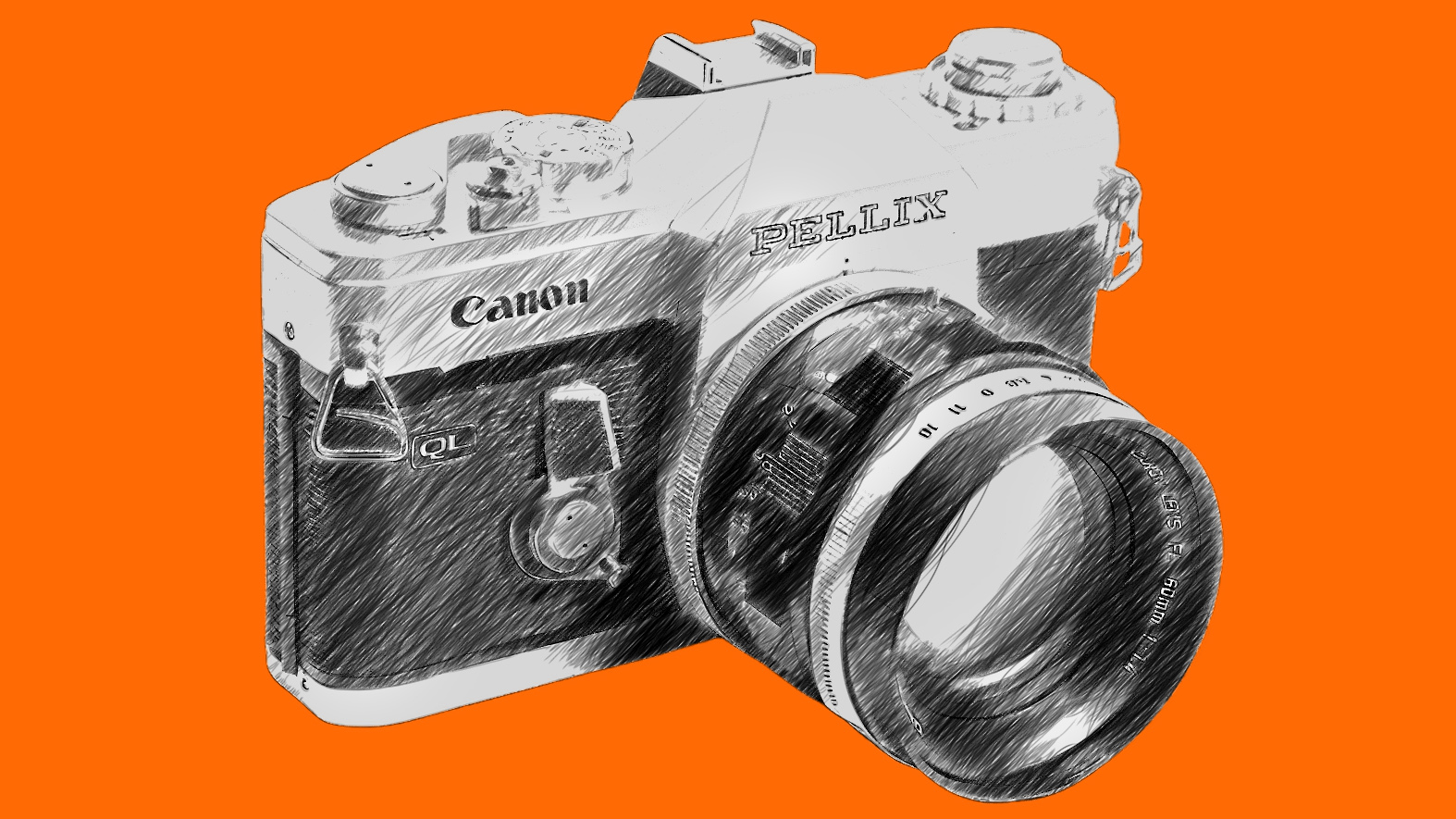Early Verdict
The Peak Design Pro Tripod series finds that sweet spot between stability and portability. Larger but sturdier than the Peak Design Travel Tripod, the Pro series is a smartly designed set of tripods that let me focus on the shot rather than fiddling with the support system.
Pros
- +
Much sturdier than Travel Tripod
- +
Minimalist yet highly mobile ball head
- +
Folds down quite small
- +
Three options to choose from
Cons
- -
Pricey
- -
No rotating center column
- -
Launching first on Kickstarter
Why you can trust Digital Camera World
When Peak Design first launched a travel tripod in 2019, I fell in love with the tripod that was small enough to not even make much of a dent inside a carryon suitcase. Now, Peak Design is back with another tripod – or rather, three tripods. The Peak Design Pro Lite, Pro, and Pro Tall are a series of high-end travel tripods designed to balance portability with stability and features.
The new Peak Design Pro series doesn’t replace the Peak Design Travel Tripod, which remains the smallest of the bunch, with the aluminum variant the most affordable. But the Peak Design Pro takes the compact design of the 2019 tripod and sacrifices some portability in the name of stability and extra features.
I packed all three of the Peak Design Pro tripods for a road trip – using pre-production versions before the tripods were even announced to the public. I’m holding off on my final verdict until the final production samples, but, so far, I’m impressed at how much stability and features Peak Design has managed to cram into its newest tripods.
Peak Design Pro Tripod: Specifications
| Header Cell - Column 0 | Pro Lite | Pro | Pro Tall |
|---|---|---|---|
Weight | 1.7kg / 4.2 lbs | 1.9kg / 4.2 lbs | 2.0 kg / 4.5 lbs |
Packed length | 48.8 cm / 19.2" | 50.1cm / 19.7" | 58.1cm / 22.9" |
Packed diameter | 8.5 cm / 3.35" | 9.3 cm / 3.66" | 9.3 cm / 3.66" |
Max height | 162.5 cm / 64.0" | 168.4 cm / 66.3" | 197.4 cm / 77.7" |
Max height without center column | 133.2 cm / 52.5" | 138 cm / 54.3" | 162cm / 63.8" |
Minimum height | 15.8 cm / 6.2" | 15.9cm / 6.3" | 17.3cm / 6.8" |
Weight capacity | 15.9 kg / 35 lbs | 18.1kg / 40 lbs | 18.1kg / 40 lbs |
Leg sections | 4 | 4 | 4 |
Ball head included? | Yes, Pro Ball Head | Yes, Pro Ball Head | Yes, Pro Ball Head |
Peak Design Pro Tripod: Price and availability
The Peak Design Pro tripod series is launching initially on Kickstarter, with the first backers expected to begin receiving tripods in October 2025 and standard fulfillment expected for February 2026.
The Pro Lite is the most affordable in the series, estimated to sit at around $799.99 / £699.99 retail. The Pro will add another $100 / £100 onto that, and the Pro Tall another $100 / £100 onto that for $899.99 / £799.99 and $999.99 / £899.99, respectively.
Early bird backers on Kickstarter in the US can get a 9 percent discount off that price with shipping expected for October 2025, while those willing to wait until February 2026 can get steeper discounts ranging from $619 for the Pro Lite to $729 for the Pro Tall.
Peak Design Pro Tripod: Design & Handling
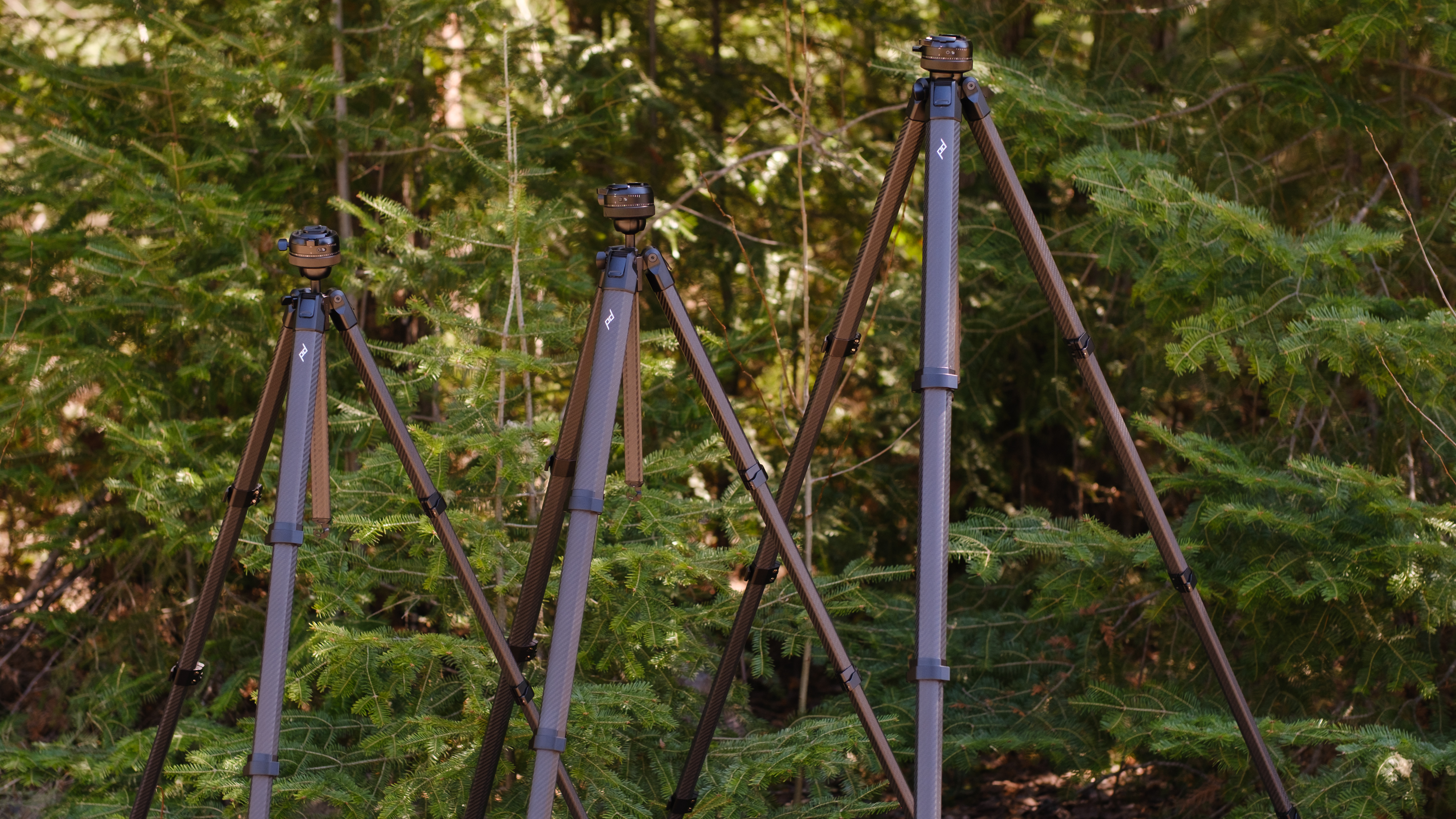
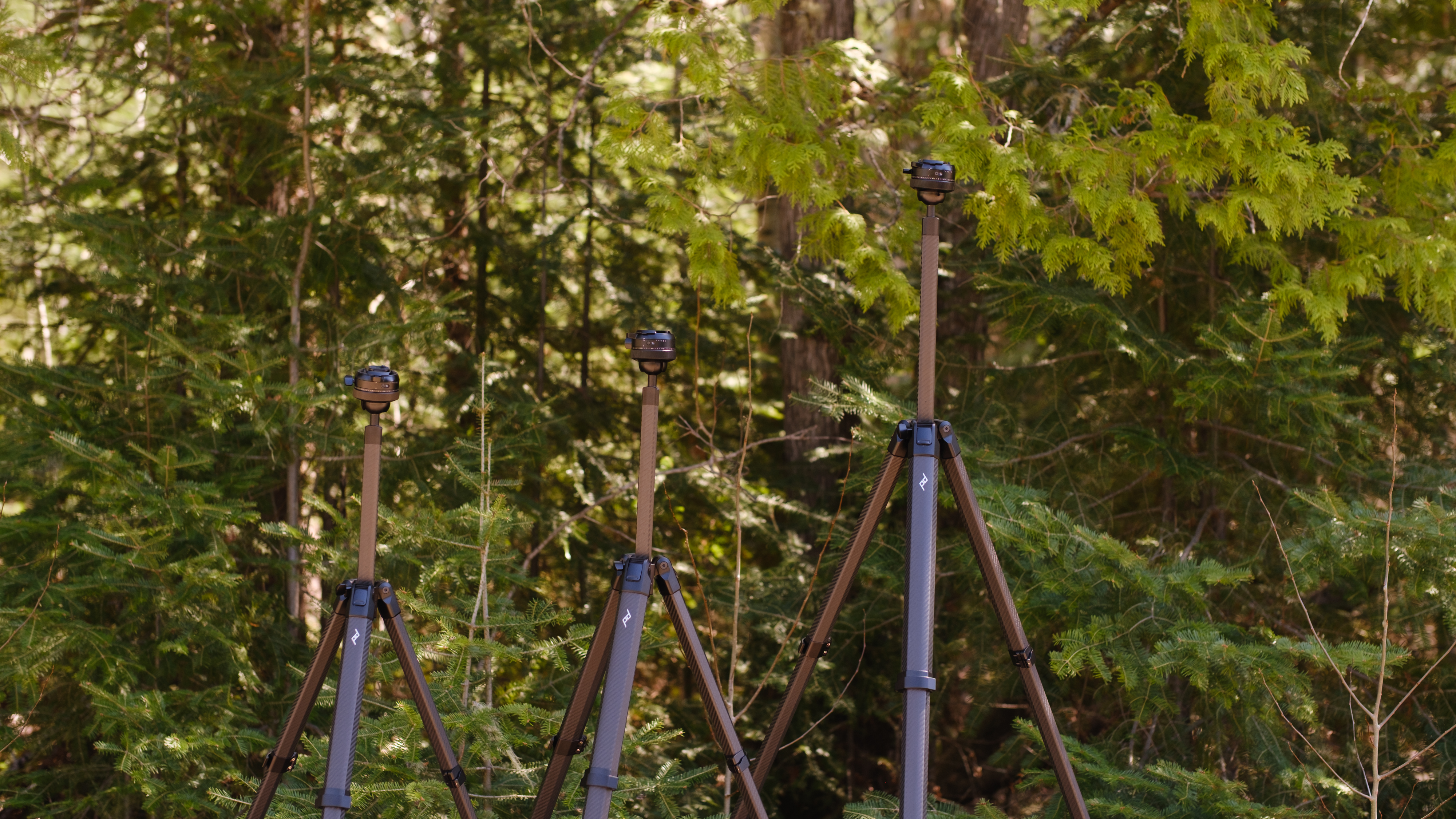
When Peak Design launched the original Travel Tripod, I looked at the oddly shaped legs that, when folded, created a perfect cylinder and thought, why hasn’t anyone else already thought of this? The Peak Design Pro series similarly feels like a feat of clever engineering.
The best camera deals, reviews, product advice, and unmissable photography news, direct to your inbox!
The Peak Design Pro series uses the same oddly shaped legs that the Travel Tripod does, creating a slimmer profile when folded. But, the Pro series has thicker legs and fewer leg sections, helping to create an overall sturdier design that’s capable of handling heavier loads.
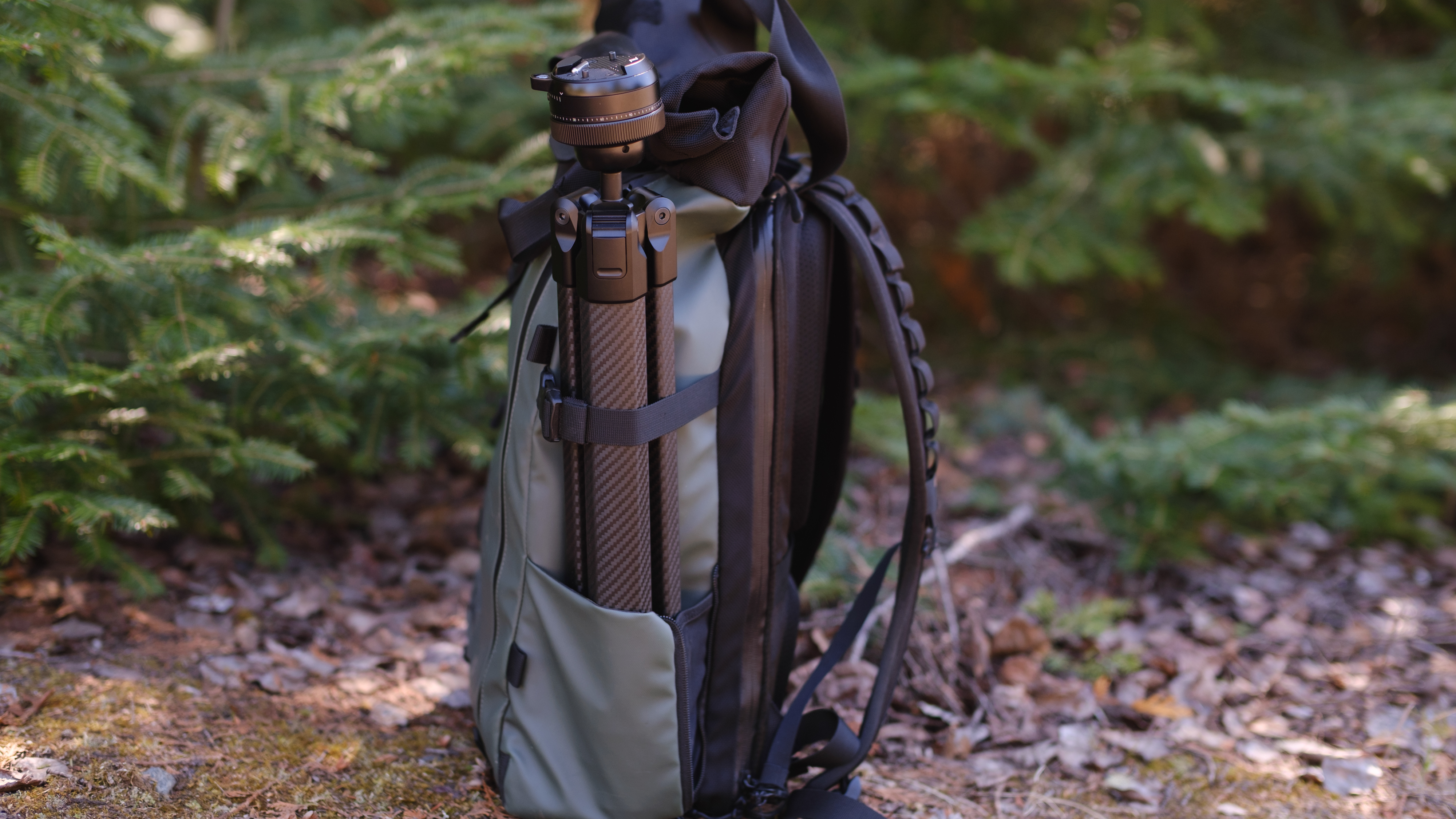
Many travel tripods use twist locks because they are smaller – but Peak Design doesn’t like twist locks, and I happen to agree after once having a monopod unlock itself mid-shoot. The legs adjust height with flip locks at each of the four leg sections.

The Peak Design Pro series also upgrades to what the company calls the Pro Ball Head, included in the cost. The ball head can tilt up to 15 degrees when still in the stored position, but pull the ball head up away from the legs and gain more flexibility with pan and tilt, including the ability to tilt the camera for horizontal shots.
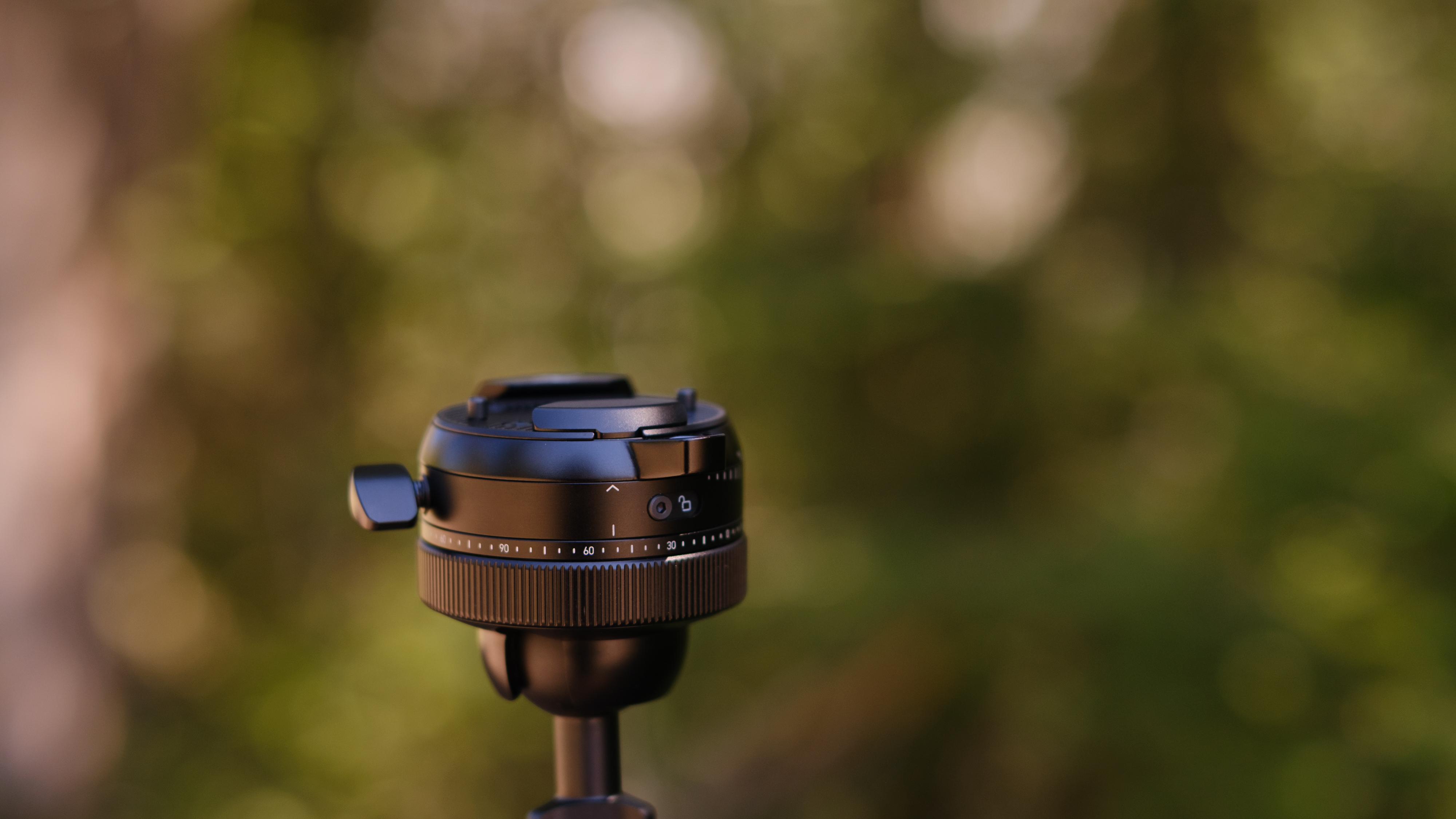

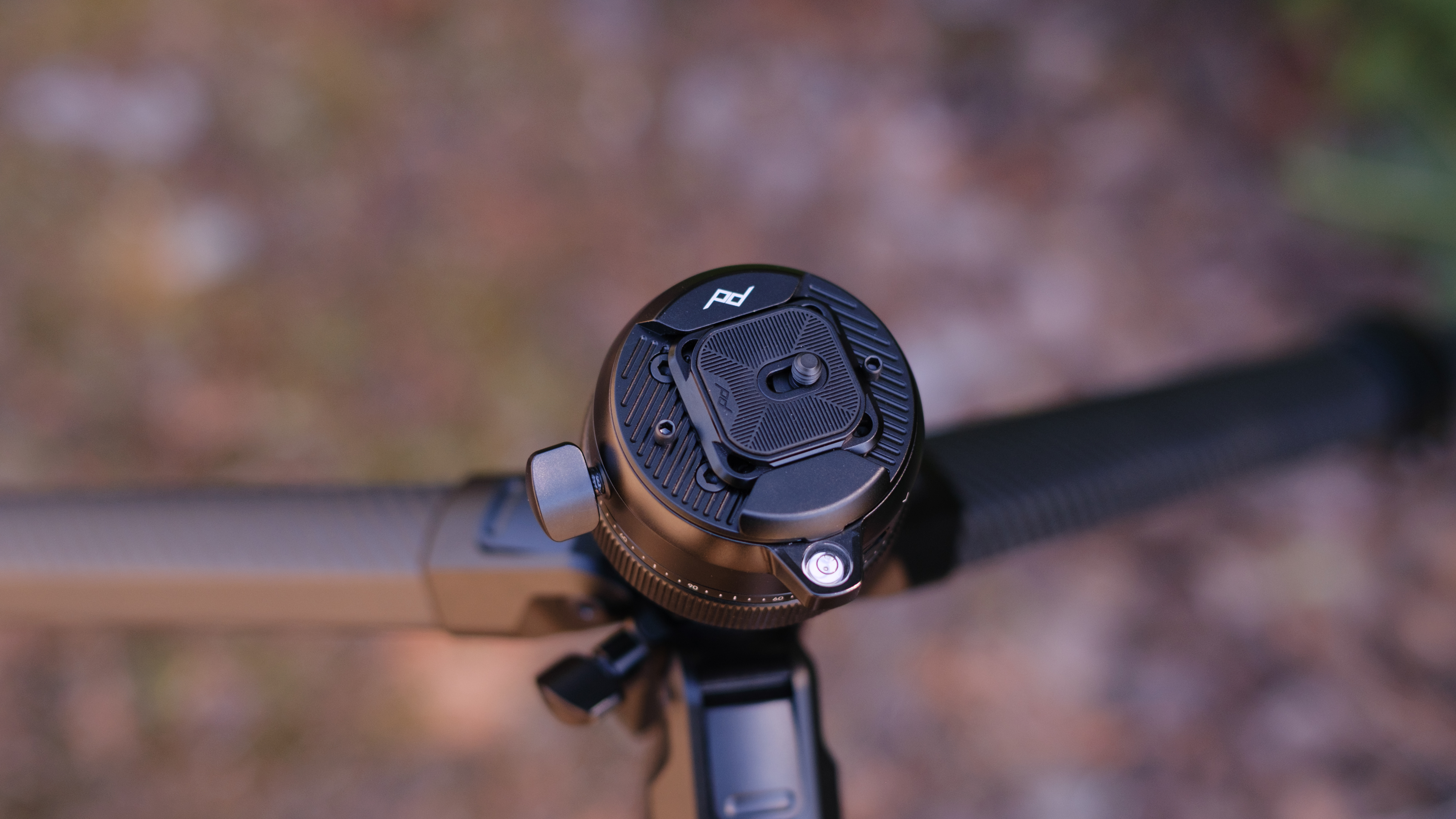
Like the legs, the ball head is also designed for minimizing the packed profile of the tripod. A twist knob around the entire ball head loosens the ball head for pan and tilt. A small knob unscrews to allow the camera to pan around on the now labeled ball head.
The quick release plate is the same as Peak Design’s earlier tripod, but the new head is designed to snap into that quick plate by just aligning the camera and pressing down. The knob – which has a bubble level on it – closes automatically to lock the camera in place. For added security, there’s a secondary lock switch for double-locked security. (The lock works both ways and will also prevent the camera from snapping in if the lock is engaged when the camera isn’t yet mounted.)
The tripod’s center column has a hook for adding a counterweight. This hook actually removes, where a hex key is hidden inside to adjust the tension on the leg locks. (It can also hold a mobile smartphone mount, but this is now sold separately.) The center column doesn't rotate, a feature some tripods offer for flat lays.
Sold separately, Peak Design is also launching a Tilt Mod accessory that converts the ballhead to a pan and tilt head. The handle unscrews and cleverly tucks inside the mod so that this head only takes up the space of a kit lens inside a bag. The pan and tilt movement with the mod felt smooth, and the handle made for comfortable panning that seemed like an ideal pace for video, but perhaps a bit slow if trying to pan with race cars or something equally quick.

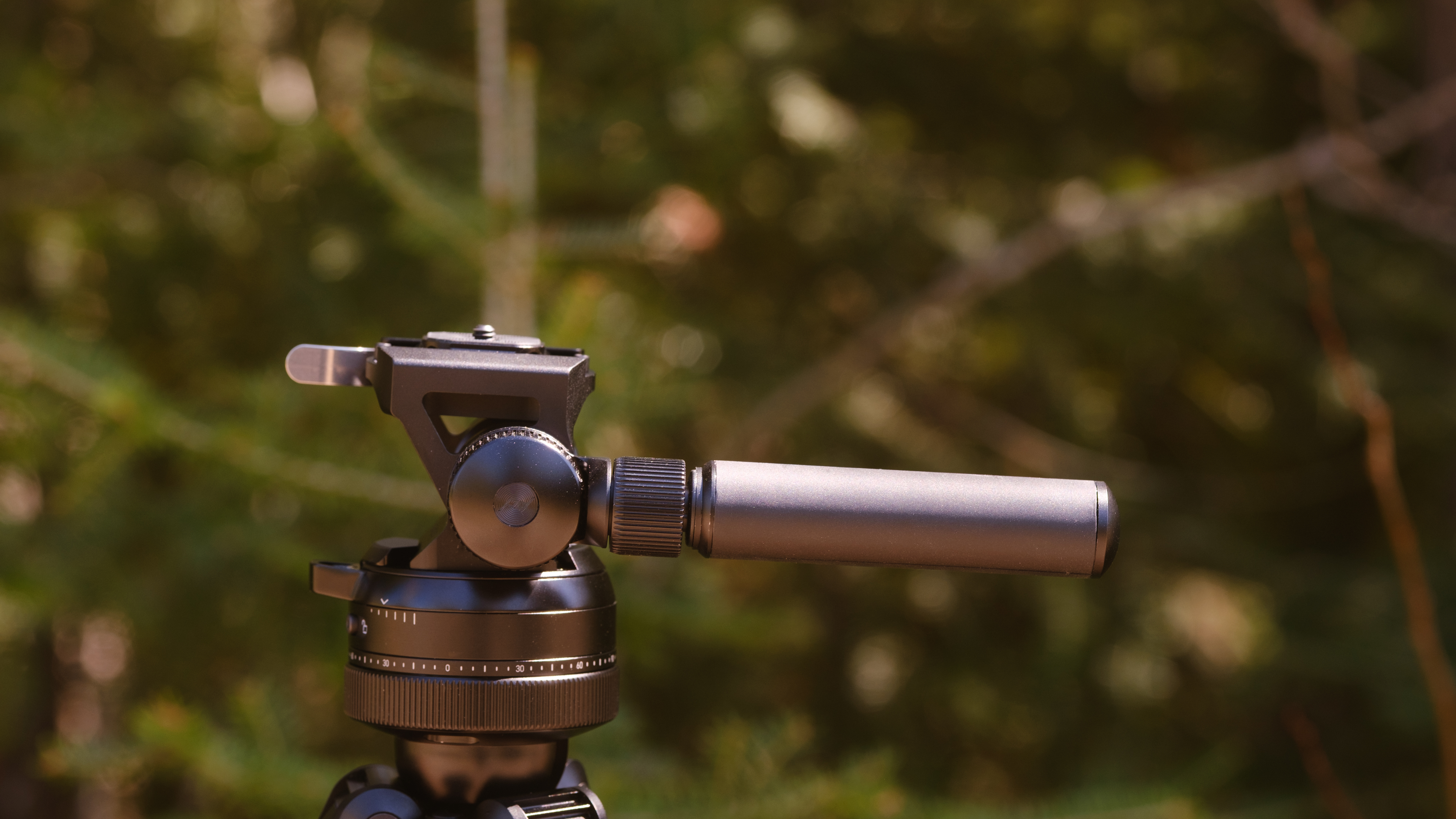
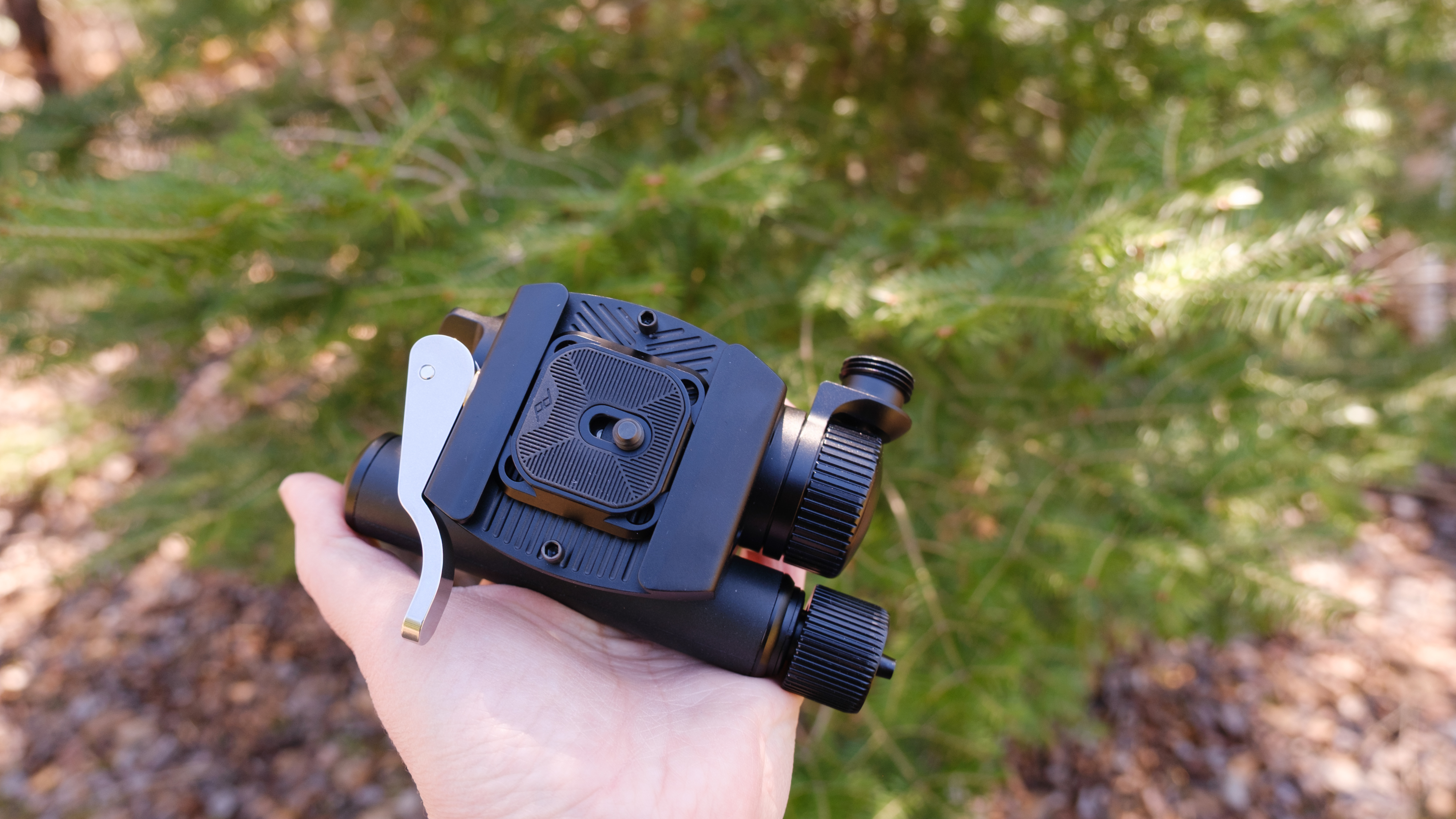
Peak Design is also offering a self-leveling head add-on that’s designed to work with third-party heads and level the tripod without adjusting the legs.
While the design upgrades from the original Travel Tripod are lovely, they do come at a cost. The Travel Tripod is far smaller. Where I thought the Travel Tripod could fit inside a camera backpack, all three tripods in the Pro series would need to use a camera bag’s traditional tripod straps. The Peak Design Pro series is still fairly compact, but doesn’t have the startlingly small profile of the original Travel Tripod. Besides the longer legs, the ball head doesn’t sit as flush to the legs to allow for greater movement, so the added stability and versatility come at the cost of the packed size.
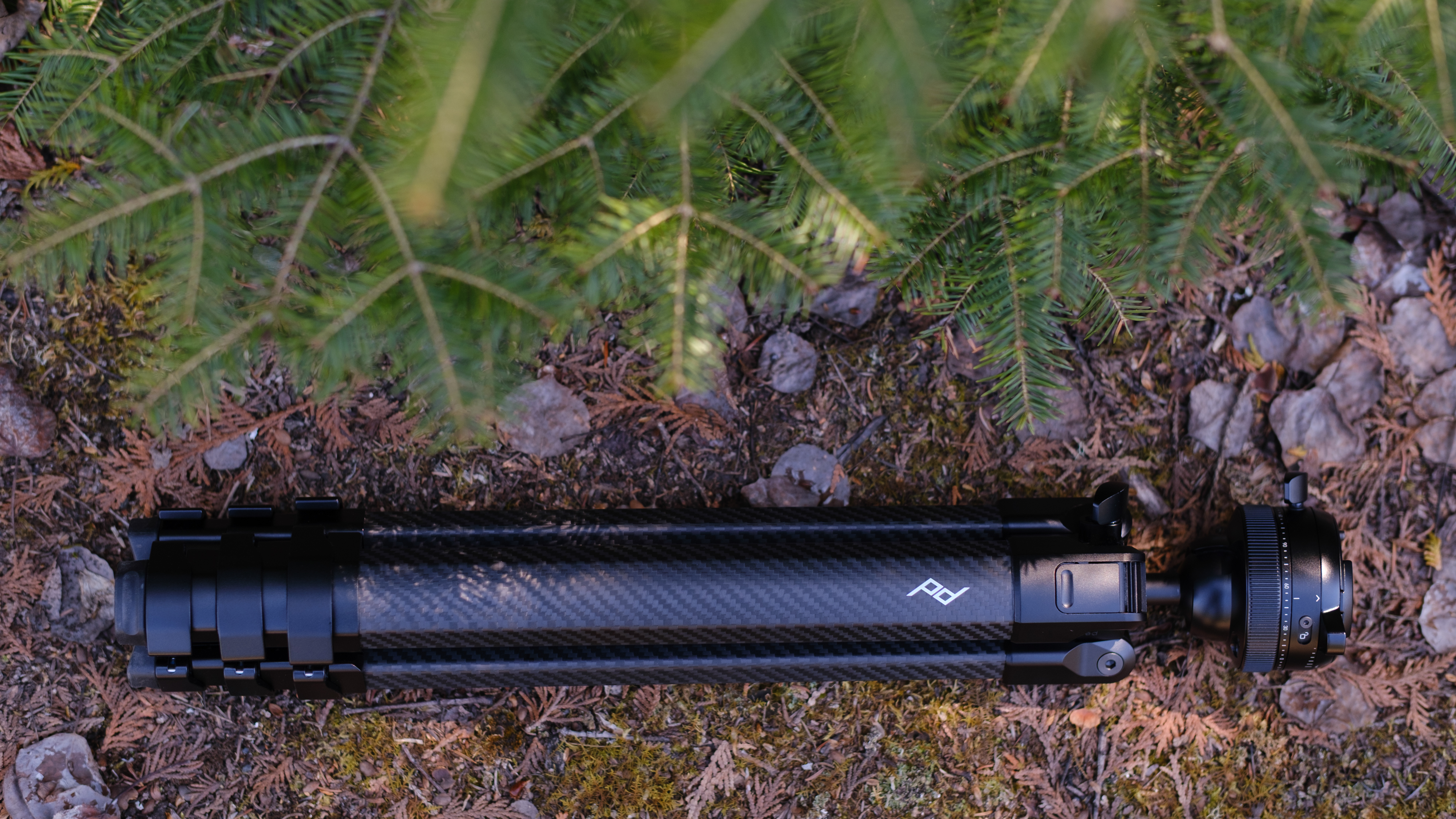
Folded, the Peak Design Pro Lite is 19.2 inches / 48.8 cm long and 3.35 inches / 8.3 cm in diameter. That’s the same diameter as the Travel, but nearly five inches / 10 cm longer. Both the Pro and Pro tall Tripods have the same 3.66 inch / 9.3 cm diameter, with the Pro 19.7 inches / 50.1 cm long and the Pro Tall 22.9 inches / 58.1 cm long when packed.
Peak Design Pro Tripod: Performance

I set up the Peak Design Pro tripods alongside the original Travel Tripod, and the first thing that I noticed was that the Pro series is far sturdier. That shows in the specifications where the Pro Lite is capable of handling 35 lbs / 15.9 kg and the Pro and Pro Tall 40 lbs / 18.1kg.
But, in real-world experience, the larger legs and fewer sections meant I didn’t feel like I needed to use the bag hook to add counterweight as often as with the smallest Peak Design tripod. I felt comfortable walking away from my camera while it shot a time-lapse.
While the three new tripods are sturdier than the original, smaller tripod, the three new options still have ways to maximize stability. The center column has a counterweight hook for adding weight. Adjusting the leg angles closer to the ground will also add more stability – there are three angle options for the legs.
Like Peak Design’s first tripod, the Pro series is quick to set up. It took just seconds for me to unlock the flip locks (three at a time), unfold the legs, lock the legs in place, and snap my camera onto the quick mount at the top.
During use, adjusting the tripod is simple with the ball head adjustment as a large dial wrapped around the entire head, and a small bubble level to aid in straight horizons. What I loved about the large ball head knob is that I was less likely to reach for the wrong one – large twisting knob to adjust the angle, small knob to pan around.
The tripod is similarly easy to fold down. Adjusting the leg angle only requires a press of the button when expanding; when folding the legs, simply push in.
Peak Design Pro Lite vs. Pro vs. Pro Tall
The biggest difference between Peak Design’s newest tripods is the size, but there are subtle differences as well.
The Lite is the smallest of the new trio, but is both larger and sturdier than the original Peak Design Travel Tripod. The legs, hub, and center column are smaller.
The Pro and Pro Tall both have the same weight capacity at 40 lbs / 18.1 kg, and have thicker legs than the Lite. The Pro Tall still only has the four leg sections, but these sections are taller to reach up to 77.7 inches / 197.4 cm compared to the Pro’s 66.3 inches / 168.4 cm. Peak Design says this is both for taller photographers and for those who want to avoid using the center column for added security, as the Pro Tall is still 63.8 inches / 162 cm without using the center column.
Peak Design Pro vs. Peak Design Travel Tripod
The new Pro series isn’t designed to replace the original Peak Design Travel Tripod, but rather as a sturdier, larger alternative. Still, there are several key changes from the option introduced in 2019.
The ball head has several improvements over the Pro series. The Travel head sits down lower on top of the tripod legs, which means it has less movement. The Pro ball heads need to deploy or pull up from the legs for maximum movement. The earlier ball head only had the ball head rotation without the additional panning movement.
The 2019 tripod has five skinnier leg sections, whereas the Pro series has fewer leg sections and also wider legs. This gives the Pro series options a much sturdier feel and a higher weight capacity – 20 lbs / 9.1 kg on the Travel Tripod, but up to 35 lbs / 15.9 kg on the Pro Lite and 40 lbs / 18.1 kg on both the Pro and Pro Tall.
The Pro series also has more accessories, including a mod to make the ball head a pan and tilt head, as well as a leveling base. The mobile smartphone mount included in the Travel is sold separately from the Pro series, however.
While the Pro series is sturdier and offers more flexible options with the ball head, the Travel Tripod is still the smallest and lightest. I feel like the Travel could fit inside a bag, whereas the Pro Lite still feels like it needs the traditional camera bag straps.
Early Verdict
The Peak Design Pro Tripod series is an expertly designed set of tripods that allows me to focus more on the photography and less on the tripod. Like the original Peak Design Travel tripod, the Pro series is filled with clever engineering, but it works to create a small-ish tripod that doesn’t skimp on stability.
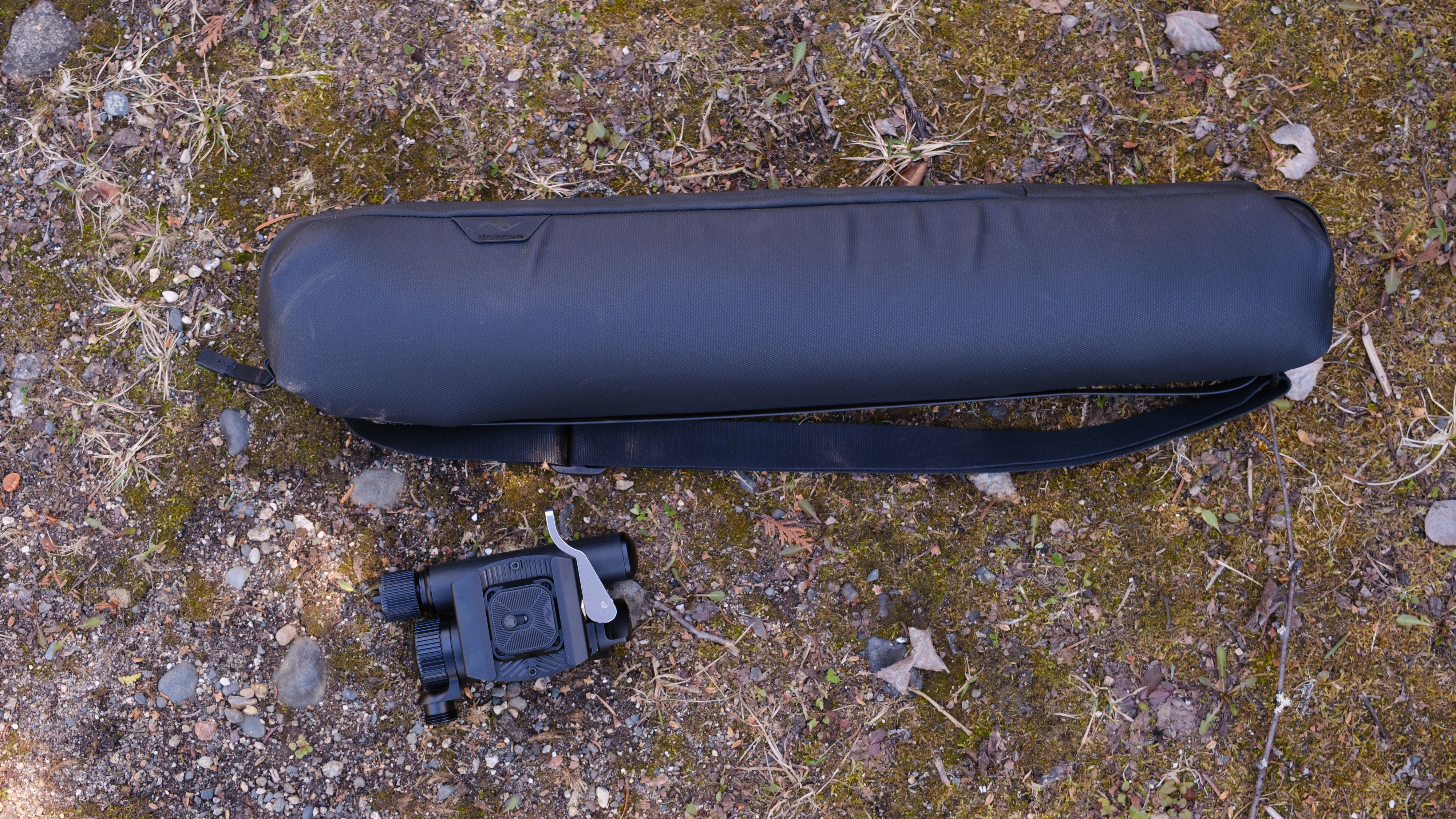
Like many (if not all) of Peak Design's products, the Pro tripods are launching on Kickstarter. The review samples that I tested were pre-production samples, but they felt mostly complete. The labels were a bit off on the ball head, and there was something goopy on the inside of the panning knob, but otherwise felt fairly seemless and complete. I will, however, reserve my final review rating for the full production samples.
My biggest gripe with the new Peak Design Pro Tripods? The price seems a bit steep, although certainly not unheard of for high-end camera supports, with the Pro range estimated to retail from $799.99 / £699.99 for the Pro Lite to $999.99 / £899.99 for the Pro Tall. Admittedly, as a five-foot-two photographer using primarily small mirrorless cameras and prime lenses, I’m hardly the audience looking for a tripod that can support up to 40 pounds and extend more than six feet tall. Still, the cost is nothing to sneeze at, and if you want the Tilt Mod it's another $149.95 / £134.99, with the Pro Leveling Base $129.95 / £119.99.
Alternatives
The Benro Cyanbird Carbon Tripod with FS30 head uses a similar strategy with oddly shaped legs in order to pack down much smaller. It’s sturdy and competitively priced, but the five-leg sections and smaller 4.5kg / 10lb load rating mean it's more of an alternative to the Peak Design Travel than the Peak Design Pro series.
The 3 Legged Thing Nicky is a high-end tripod with a large 60kg / 132lbs capacity. But the Nicky is just legs and needs to be paired with a sold-separately head. The Nicky also doesn’t fold down as compactly as the Peak Design Pro.
You may also like
Browse the best tripod or the best travel tripod.

With more than a decade of experience writing about cameras and technology, Hillary K. Grigonis leads the US coverage for Digital Camera World. Her work has appeared in Business Insider, Digital Trends, Pocket-lint, Rangefinder, The Phoblographer, and more. Her wedding and portrait photography favors a journalistic style. She’s a former Nikon shooter and a current Fujifilm user, but has tested a wide range of cameras and lenses across multiple brands. Hillary is also a licensed drone pilot.
You must confirm your public display name before commenting
Please logout and then login again, you will then be prompted to enter your display name.


